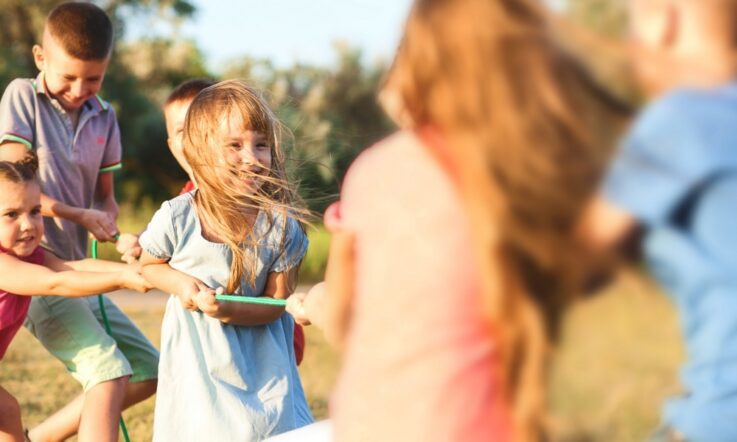School playgroups benefit children, their families, schools and communities. New Australian research has identified six key features of high-performing school playgroups.
The research project – School Playgroups: A Best Practice Framework – looked at 18 school playgroups across metropolitan, rural and remote areas in Victoria over three years. An accompanying study details the two main ideas researchers used to identify high-performing school playgroups: ‘capabilities’ and ‘relationships’.
In the study, capabilities referred to what people can be and do within their communities; they grow when people are supported with adequate resources and are connected with their community. Relationships were the connections people have with others, enabling them to share information, ideas and experiences.
The research team involved academics from Australian Catholic University, Deakin University, Monash University and Playgroup Victoria here in Australia, and the University of Oxford in the UK.
They focused on two main types of relationships identified within social capital theory – bonding relationships and bridging relationships. Bonding relationships occur ‘horizontally’ between likeminded people, such as children and families in a playgroup. Bridging relationships occur ‘vertically’ with people outside of the likeminded group, such as between playgroup families, and the local school community.
Lead researcher Professor Susan Edwards tells Teacher there were unique benefits of bonding and bridging relationships for school playgroups in the study.
‘Bonding relationships between children and families support shared learning about children’s play and development. They also help families share information about local opportunities,’ she says. ‘Shared information of this type increased community participation in activities that are known to build children’s social capabilities and confidence.’
She adds bridging relationships, on the other hand, ‘provide rich opportunities for families to connect with school staff, such as the playgroup facilitator, junior school teachers, the principal, and school support staff. Weekly attendance at a school playgroup builds these connections into strong relationships through which schools can learn more about children’s strengths and interests.’
School playgroups that had strong bonding and bridging relationships were considered high-performing. Of the 18 schools that participated in the study, six were found to have high-performing playgroups. The researchers identified six key features common across the exemplar playgroups:
- Materials (toys and equipment);
- Facilitator (a nominated staff or community member that leads the playgroup);
- Space (a dedicated space for the playgroup to run);
- Location (an accessible place for participating families);
- Scheduling (a timetable suitable to the needs of those attending); and,
- Health and safety (a safe space for the physical and mental health of everyone present).
How can schools develop a high-performing playgroup?
There are lots of practical ways that schools can get involved with running their own playgroup. The study found that schools can facilitate and benefit from strong bridging relationships.
The role of the principal
From planning to staffing, funding to monitoring, principals can play many roles in supporting school playgroups. Allocating a dedicated space, and securing a facilitator are both highlighted as key features of importance in the study. Principals can consider things like ‘including the playgroup in junior school staff teaching loads, directing discretional funding to the role or using funded chaplaincy support in the playgroup’ Edwards explains.
The role of other school staff
Library, digital media and physical education staff can all help to support school playgroups with regular or casual attendance. Providing learning opportunities with teachers across the school can strengthen bridging relationships for when playgroup children make the transition to full school. Grade level teachers might also consider involving students in older year levels to take part.
Schools on a budget
While it might seem resource-heavy at first, not all exemplar school playgroups run on a big budget. Of the six high-performing school playgroups identified in the study, three were from low socioeconomic areas.
Speaking about some of the ways schools can start up their own playgroup with limited funding, Edwards says having a dedicated facilitator is a good start.
‘If a school playgroup is offered once per week for four hours per week (two-and-a-half hours’ running time and one-and-a-half hours’ admin and preparation) with a paid facilitator this will be an excellent start.’
Schools on a limited budget can also think about hosting playgroups in a multipurpose room, or a library, and can be resourceful with materials for play.
‘Materials do not need to be expensive or fancy,’ Edwards tells Teacher. ‘Free parts materials are excellent and can be sourced from local opportunity shops and other recycling outlets (pots and pans for the sandpit).
‘The most important aspect of school playgroups is building relationships between children, families and the school playgroup.’
References and related reading
Edwards, S., McLean, K., Nolan, A., Evangelou, M., Skouteris, H., Henderson, M., Tarasuik, J., & Bartlett, J. (2021). School Playgroups Research Brief. School playgroups: Which features of provision promote child and family capabilities about play and learning? Australian Catholic University & Playgroup Victoria. https://www.playgroup.org.au/wp-content/uploads/2021/10/DR_SPG-VIC_ResearchBrief-V3.pdf
A range of resources have been created from this research project for school staff and families interested in learning about school playgroups. PDFs are downloadable and videos shareable via https://www.playgroup.org.au/school-playgroups/
If your school runs a playgroup, does it have the six key features identified in the research study?
As a school leader, think about what you might need to be able to run a playgroup in your own school. Who would be the key staff involved? Where would you hold it? What would the benefits be for children, parents and school staff?



